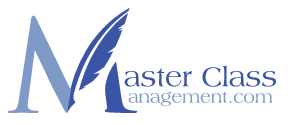Accounting for Inventory and Depreciation
Inventory is defined as assets that are intended for sale, are in process of being produced for sale, or are to be used in producing goods. Counting inventory is done in two ways: The Periodic method, which is a physical count daily, weekly, monthly or yearly, and Perpetual inventory method, which adjusts inventory with each transaction through computerized software, such as Fishbowl inventory.
Because prices of specific items can continually change, it affects the way a manufacturer accounts for materials it buys, and how a retailer accounts for the goods it buys and then sells, which affects its cost of goods sold (COGS) and its reported income.
The following equation expresses how a company's inventory is determined:
Beginning Inventory + Net Purchases - Cost of Goods Sold (COGS) = Ending Inventory
In other words, you take what the company has in the beginning, add what they have purchased, subtract what they've sold and the result is what they have remaining.
By re-arranging the formula you can get the COGS:
Beginning Inventory + Net Purchases - Ending Inventory = Cost of Goods Sold
In other words, you take what the company has in the beginning, add what they have purchased, and subtract the inventory at the end of the period, which would then equal the amount of units sold.
FIFO, LIFO and Average Costing Method
These are three of the most common methods of accounting for inventories. Here is a brief explanation of each:
- FIFO (First in, First out. Pronounced fife-oh) - The company assumes that the first item making its way into inventory is the first sold. FIFO is used by businesses whose goods spoil quickly or frequently become obsolete. As prices go up, the FIFO method gives you the lower cost of goods sold because goods bought at the lower prices are the first to be used. This will give a better bottom line or net profit because the COGS is lower, thus gross sales is higher. With higher profits comes a higher tax bite, however, the higher income looks better to prospective investors and lenders. If prices are rising, FIFO gives a better indication of the value of ending inventory on the balance sheet. LIFO isn't a good indicator of ending inventory value, because the left over inventory might be extremely old and maybe obsolete. If prices are decreasing, which is not as common, the exact opposite of the above is true.
- LIFO (Last in, First out. Pronounced life-oh) - The company assumes that the last item making its way into inventory, or most recent, is assumed to be sold first. LIFO is used when inventory does not spoil or become obsolete. When the costs of goods rise, they first sell the more costly items. COGS will be higher, thus gross sales will be lower. Net profit will be lower, but so will the tax bite.
- Average Costing Method – This is used when COGS fluctuate frequently throughout the year. The peaks and valleys tend to even out and minimize the impact on the bottom line. It is the simplest method and doesn’t track which items are sold, but just maintains a running average of cost per unit sold.
Whichever method is used, it is important to stick to just one and not switch due to possible tax implications, unless you ask the IRS for permission to change.
Accounting for depreciation deals with adjustments that are made to company profits once a month, or once a year, to account for expenses such as depreciation and amortization. The IRS has a depreciation table that specifies the life span for various types of business equipment. See www.irs.gov for more information. The most common methods used of accounting for depreciation are:
- Straight-line depreciation = Cost of asset ÷ asset’s years of life.
- Double declining balance = Book value of the asset times twice the straight-line rate.
- Sum of the year’s digits is a method of calculating depreciation of an asset that assumes higher depreciation charges and greater tax benefits in the early years of an asset's life.
- MACRS (Modified Asset Cost Recovery System) is the new accelerated cost recovery system, created after the release of the Tax Reform Act of 1986, which allows for greater accelerated depreciation over longer time periods. Faster acceleration allows individuals to deduct greater amounts during the first few years of an asset's life.
Methods of accelerated depreciation, such as double declining balance and sum of the year’s digits, allocate more to the assets cost to the early years of its life, than straight-line depreciation. Accelerated depreciation yields lower income in those early years.





